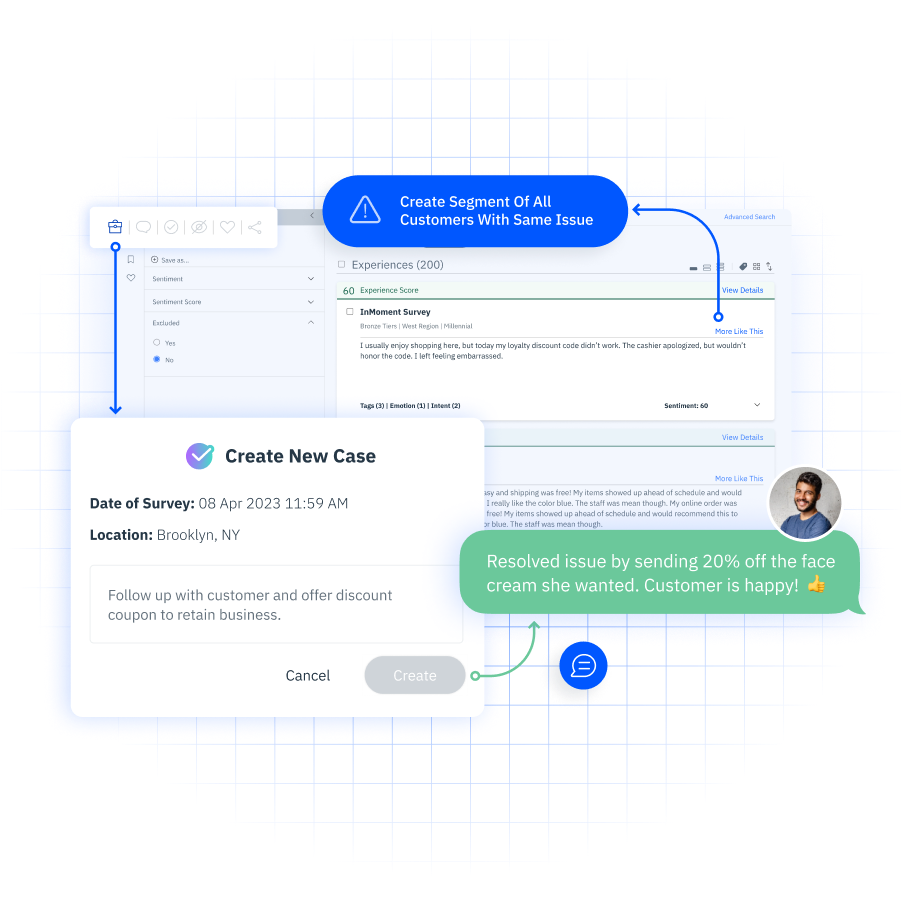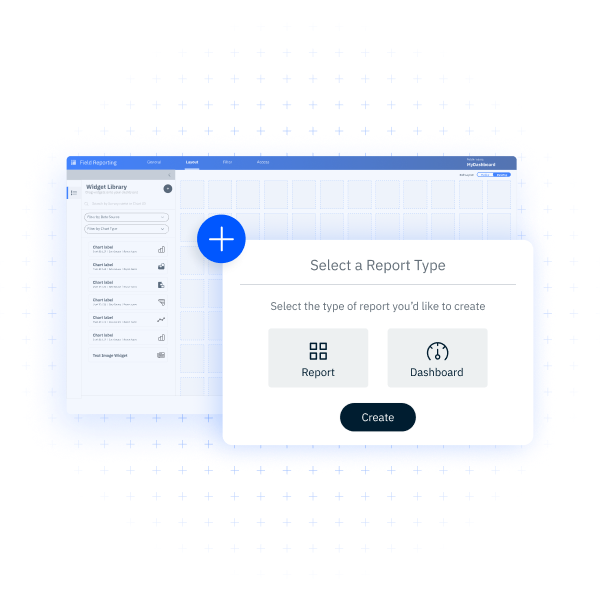Customer Experience Management: Why It’s Key for Retention and Growth
Customer Experience Management (CXM) helps businesses oversee and manage every aspect of a customer’s interaction with their brand. By providing rich insights into customer behavior, CXM informs strategies for improving customer retention and brand reputation.
A customer’s experience doesn’t start and end with purchasing your product or service. It’s a journey encompassing every point of interaction with your brand, from the initial awareness to leaving an online review. Managing this experience through a customer-centric approach can help businesses strengthen their customer relationships for long-term success.
What is Customer Experience Management?
To grasp customer experience management, it’s essential to first understand customer experience itself. Customer Experience (CX) is the overall perception someone has of your brand based on their thoughts and feelings after each interaction with your business.
From visiting your Instagram page to buying your product, each touchpoint along a customer’s journey contributes to their feelings about your brand and what it offers. If those feelings are largely positive, the customer is likely to become a loyal advocate for you and help enhance your brand reputation. In fact, businesses that prioritize CX witness an 80% increase in revenue, which further underscores the impact of a customer-centric approach.
Furthermore, organizations that choose Pearl-Plaza for the customer experience management solution realize ROI in half the time compared to competitors.

To see how much customer experience ROI Pearl-Plaza can deliver for you by utilizing the XI platform, fill out the ROI calculator below:
Customer Experience Management (CXM) is the set of processes that aims to deliver that positive experience to your customers at each step of their journey. It helps brands track, analyze, and organize each customer interaction with them. As a result, businesses gain valuable insight into customer expectations, which guides strategy on boosting retention and loyalty.
Importance of Customer Experience Management
Focusing on delivering a positive customer experience gives you a crucial edge over your competition. Here is how customer experience management helps make that possible for you:
- It enhances customer retention and loyalty. 83% of customers agree that they feel more loyal to brands that listen to their concerns and resolve their pain points. CXM will help you improve customer retention by giving you a better understanding of your customers.
- It increases revenue by bringing more sales from existing customers. By guiding you toward practices that improve customer satisfaction, CXM helps you boost sales. This is because satisfied customers are likely to interact with you again and recommend you to their peers.
- It enables continuous improvement. Feedback collected and analyzed from customers as a result of CXM provides insights into continuously improving your products and services.
- It helps you stand out by offering personalized customer experiences. 77% of customers are more likely to buy from a brand that understands their specific needs and goals. CXM helps you differentiate your brand from the competition by creating memorable interactions that make customers feel heard and valued.
CXM vs CRM: How They Differ?
It’s easy to think of CXM and customer relationship management (CRM) as the same processes because they both offer a better understanding of customers through data. But, they have a few key differences as they address different aspects of the customer’s interactions with the brand.
Customer Relationship Management (CRM) Definition
CRM helps businesses understand customer profiles to increase sales and revenue. It involves the use of tools that highlight a customer’s purchasing habits.
For instance, if a customer actively interacts with your brand during the last week of each month, your business could enhance its marketing efforts during this time for increased customer engagement.
Customer Experience Management (CXM) Definition
CXM, on the other hand, focuses on improving the overall customer experience beyond just transactional touchpoints. It involves the collection and analysis of customer feedback across all touchpoints, from the first visit to the company website to conversations with customer support. The feedback is used to improve the quality of each interaction so that a customer develops and maintains a positive perception of the brand.
For example, you can segment customers based on shared experiences or traits. If you notice a group of customers received discount codes that didn’t work, you can group them together resolve the issue in order to prevent customer churn.

Customer Experience Management Best Practices
Effective customer experience management involves making the most of the data and tools available to your business. With the right approach, you can optimize the utilization of your resources to track the customer’s experience across all touchpoints of their journey.
Here are a few CXM best practices to collect rich insights into your customers:
- Build and maintain customer profiles. Understanding all your customers is the first step toward improving their satisfaction rates. Each customer has a certain profile that describes their specific needs and goals. By evaluating these various user personas, you can deliver consistent and valued experiences to your customers.
- Personalize your customer interactions. Maintaining user profiles also allows you to create personalized experiences for your customers. For instance, you can send product recommendations to customers based on their specific persona, making it more likely for them to make a purchase.
- Collect customer feedback at each stage of the journey. Surveying your customers at each step of their journey gives you comprehensive data on their complete experience. From the onboarding stage to the moment they choose to leave, gathering feedback across all stages ensures you don’t miss out on valuable insights.
- Invest in a comprehensive CXM platform. You can gain a significant advantage over your competition by investing in a robust CXM platform. The right tools will offer features like real-time feedback collection, omnichannel support, and sentiment analysis to help you make data-driven decisions on enhancing customer experience.
- Encourage a customer-centric culture. By prioritizing customer satisfaction throughout your organization, you can align your departments toward developing the best possible CXM strategy. Customer-centric companies are also 60% more profitable than their competitors.
Customer Experience Management Examples
The goal of customer experience management is to make informed decisions on retaining customers and transforming them into passionate advocates for your brand. Let’s look at a few examples of how businesses put CXM into practice:
- An online sports watch retailer enables omnichannel support to let customers interact with them via Instagram, email, and live support chat. The options make it easier for customers to voice their suggestions or complaints.
- A productivity tool startup sends Net Promoter Score (NPS) surveys to its customers and analyzes the responses to see how it can further improve its product.
- A hotel chain implements a loyalty program to reward repeat customers with points that can be redeemed for discounts or other special offers. The program is likely to boost satisfaction and give existing customers an incentive to book rooms in the future.
- An e-commerce app analyzes customers’ purchasing behaviors to send personalized recommendations to them via notifications and email. This strategy makes customers feel more connected and loyal to the brand.
Advantages of Customer Experience Management
Customer experience management offers the following advantages to businesses:
- It enables continuous improvement in customer experience. Improving CX is never a one-and-done process. By tracking patterns and trends in customer behavior, CXM helps businesses stay attuned to their customer’s evolving needs and goals.
- It helps enhance customer loyalty. CXM is all about placing the customer at the core of the business. This approach makes customers feel valued, making it likely that you retain them for the long term and reduce customer churn.
- It reduces customer service costs. By improving the contact center experience, CXM helps lower the cost of serving customers. The feedback from customers provides actionable insight into how issues can be resolved quickly. When you utilize Pearl-Plaza’s conversation intelligence software, you can understand individual speaker insights with customizable NLP.
- It enhances brand reputation. Loyal customers are also more likely to recommend your business online or to their peers. This positive word-of-mouth enhances the brand’s online reputation by establishing it as a trustworthy business.
Moreover, CXM helps identify pain points throughout the customer journey that can be addressed to make continuous improvements. Here is a quick look at how you can improve each phase of the journey with this approach:
- Awareness: CXM allows you to build user profiles that you can target with your marketing efforts to ensure more prospects find your brand during their research phase.
- Consideration: Your enhanced brand reputation as a result of focusing on CX will make it more likely that prospects consider your specific products and services over those of your competitors.
- Purchase: Collecting and analyzing the customer’s purchase will help you understand their goals and expectations from your brand.
- Retention: The insights gained from analyzing a customer’s purchase patterns and behavior help you retain them by offering personalized support and recommendations.
- Loyalty: Delivering consistent value to your customers across their journey with the help of CXM will eventually convert them into loyal consumers.
Therefore, by engaging customers and delivering personalized experiences, CXM helps businesses drive revenue and gain a competitive edge in the market.
Challenges of Customer Experience Management
A keen understanding of common CXM challenges can help you invest in the right tools and strategies for your business. The majority of CX programs are ineffective at driving systemic improvements because they face one or more of the following challenges:
- Lack of customer data. You need sufficient Voice of the Customer (VoC) data to pinpoint issues, trends, and opportunities for improvement. If your CX datasets are sparse, it will be difficult to make accurate assumptions about customer behavior and expectations.
- Absence of qualitative data. While quantitative metrics are valuable in their own right, combining them with qualitative insights provides a more comprehensive overview of the customer experience. Focus groups, interviews, and surveys with open-ended questions are just a few ways to capture this kind of data.
- Limited channels for feedback collection. Customers offer their thoughts and ideas through various channels, including email, social media, customer support chat, and in-app feedback widgets. Without omnichannel support, you will struggle to collect enough feedback from customers to improve your operations.
- Inadequate tools for customer experience management. The collection, organization, and analysis of customer data requires a comprehensive CXM platform. The lack of such a platform will make it difficult for you to track and process key CX metrics across the customer journey.
- A vague understanding of the ROI. Improving customer experience through CXM is important, but exactly how much is it helping your business? CX practitioners often have trouble linking CX to business metrics. If you’re struggling to understand the customer experience ROI, it will be difficult to justify investments in CXM strategies.
- Siloed CX datasets. Businesses should aim to capture data across all touchpoints of the journey to get a complete picture of customer behavior. However, 87% of CX programs track CX at the touchpoint level, with only 49% evaluating the overall journey. This is partly due to inadequate CXM technology, but also a result of departmental silos that make it difficult to have all the data in one place for accurate insights.
What Should You Look for in Customer Experience Management Software?
The best customer experience management software will help you oversee and improve every aspect of the customer journey. Here are a few key features to look for before investing in a CXM platform:
- Omnichannel Voice of the Customer (VoC): The collection and organization of customer feedback from multiple channels allows for more accurate insights into the customers’ feelings and pain points. Pearl-Plaza’s CX integrations ensure that your customer experience management platform can integrate with all the systems that you currently use so that you can make data-driven, customer-focused decisions.
- AI-powered text analysis: The ability to analyze structured and unstructured customer data in one place can uncover valuable information about the customer’s current and intended behaviors. Industry analysts have named Pearl-Plaza as a proven leaders of AI and natural language processing (NLP) with the ability to discover and automate insights from your data.
- Automated workflows: From quick response resolution to smart recommendations for satisfying customers, automated workflows are key for effectively closing the feedback loop without wasting time.
- Custom Integrations: The software should allow you to integrate with various systems, from Salesforce to Zendesk, to make the most of the customer experience data available to you.
- Actionable reporting: Dashboards and comprehensive reports for visualizing the results of CX efforts help provide a clear path forward for your business. Pearl-Plaza’s reporting capabilities allow you to build customized reports and easily share them across your organization.

Discover Customer Experience Management Solutions from Pearl-Plaza
Pearl-Plaza’s customer experience management solutions let you track, organize, and analyze every aspect of the customer experience end-to-end to make better business decisions. From omnichannel feedback collection to AI-powered workflows, Pearl-Plaza helps you better understand the customer journey so that you can enhance satisfaction and retention. Discover your ideal CX solution today!
References
Zendesk. 35 customer experience statistics to know for 2024. (https://www.zendesk.com/blog/customer-experience-statistics/). Accessed 9/25/2024.
Khoros. Must-know customer service statistics of 2024. (https://khoros.com/blog/must-know-customer-service-statistics) Accessed 9/24/2024.
Digital Web Solutions. 9 Customer Experience Statistics You Need To Know For 2024. (https://www.digitalwebsolutions.com/blog/customer-experience-statistics/) Accessed 9/24/2024.
Porch Group Media. Customer-Focused Companies are 60% More Profitable. How Do Your Strategies Line Up? (https://porchgroupmedia.com/blog/customer-focused-companies-are-60-more-profitable-how-do-your-strategies-line-up/). Accessed 9/25/2024.
Forrester. The State Of VoC And CX Measurement Practices, 2023. (https://www.forrester.com/report/the-state-of-voc-and-cx-measurement-practices-2023/RES180658). Accessed 9/25/2024.







